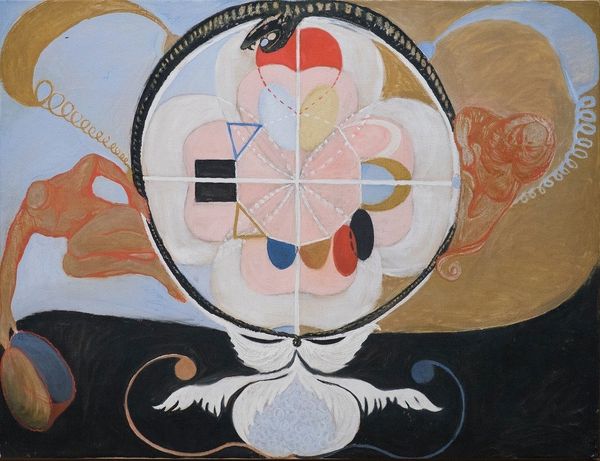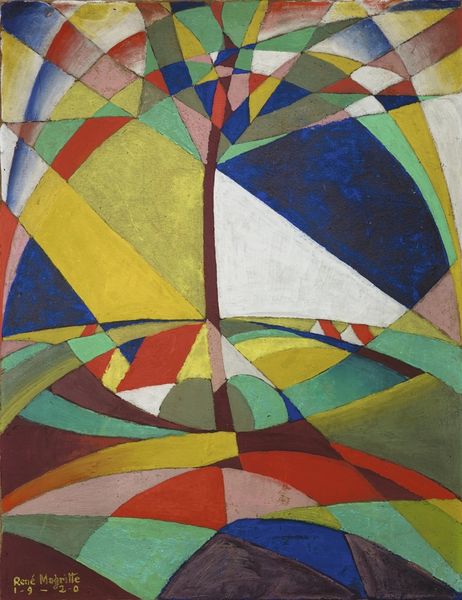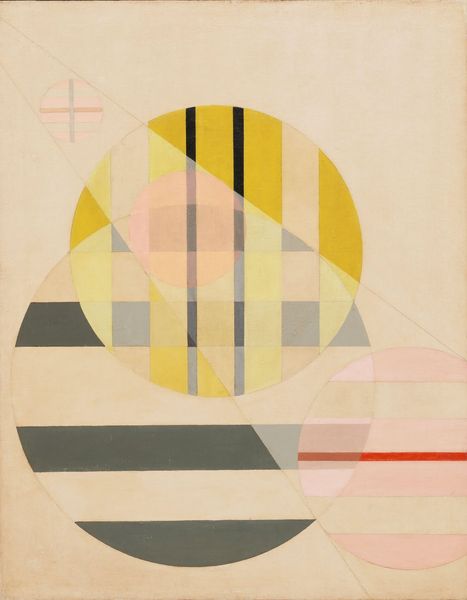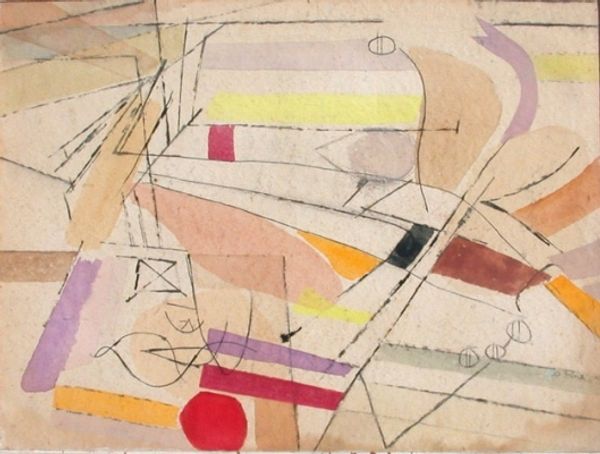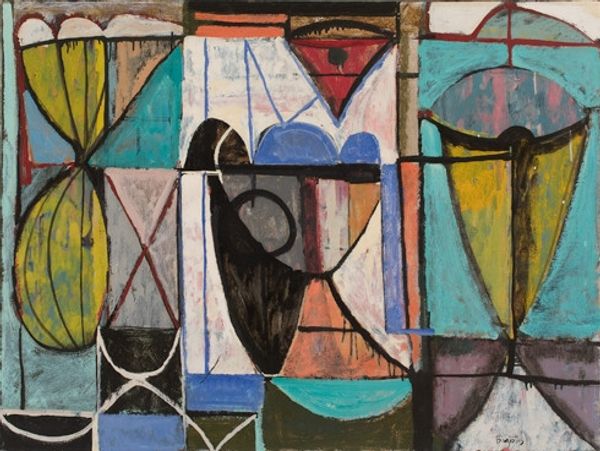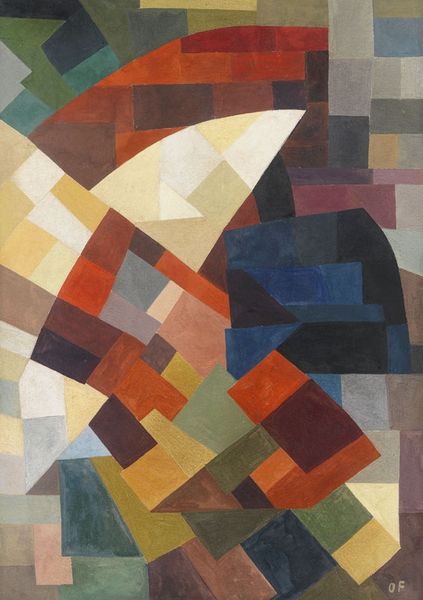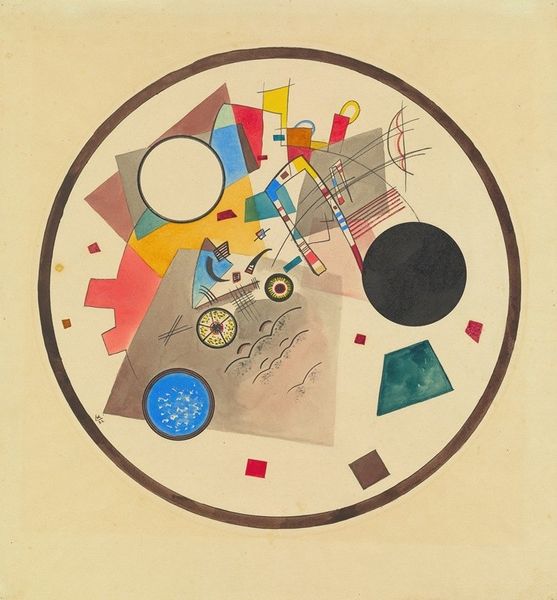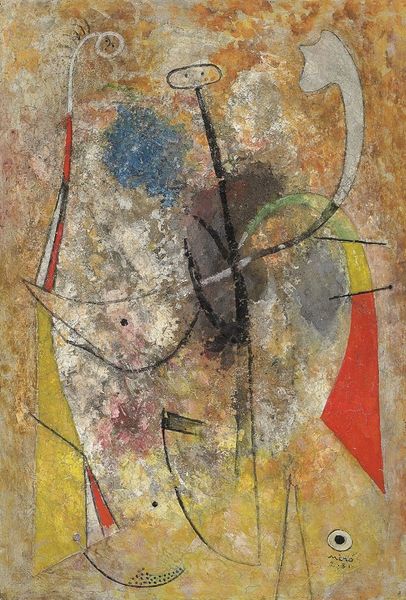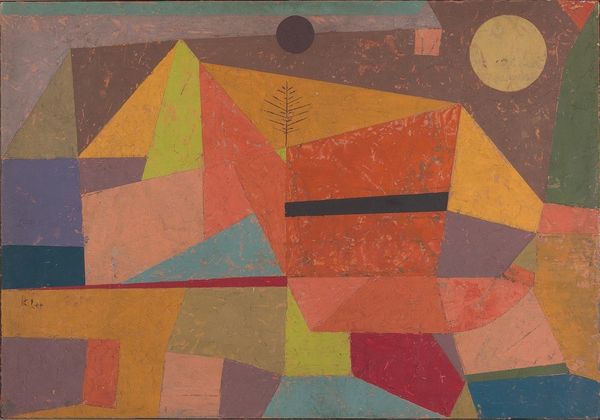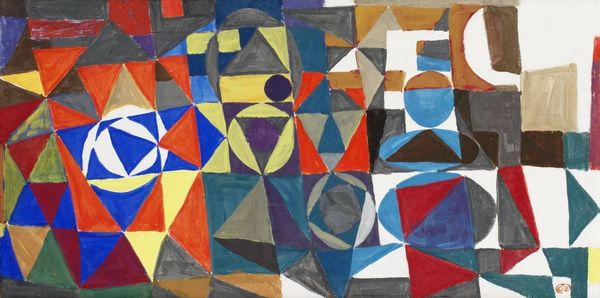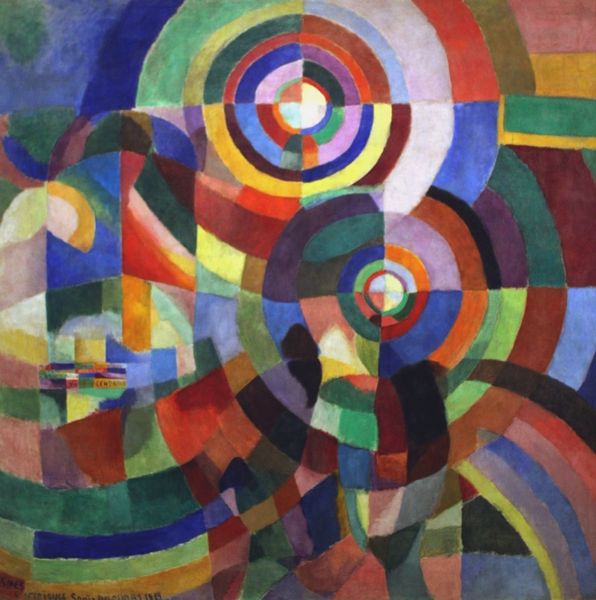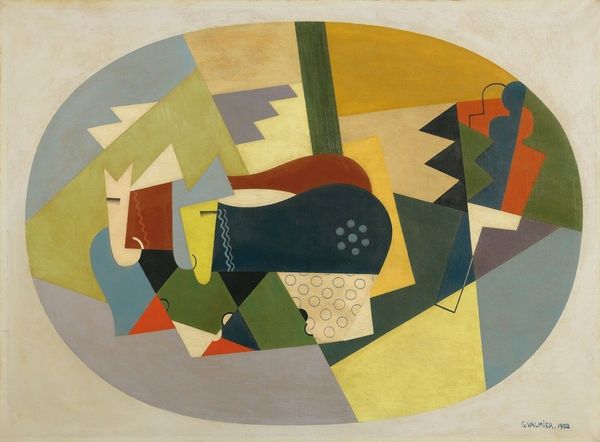
mixed-media, painting
#
art-deco
#
cubism
#
mixed-media
#
painting
#
form
#
geometric
#
abstraction
#
line
#
modernism
Copyright: Public domain US
Curator: Upon first glance, it's striking. The geometric forms overlapping and intersecting... It evokes a sense of controlled chaos, doesn't it? Editor: Indeed, a potent kind of unease. It feels spatially disorienting, as though peering into the anxieties of modern life. Curator: We are looking at Suzanne Duchamp's "Radiation of Two Lone Ones at a Distance" from 1920, a mixed-media work that deftly incorporates the visual languages of Cubism and Art Deco. I see in it a map, perhaps of longing. Editor: Duchamp, sister to Marcel, positioned this work squarely within the debates of her time. Notice how she harnesses the visual language of industrial progress to highlight emotional isolation? The rigid lines and geometric precision contrast sharply with the promise of connection. This radiates alienation, doesn’t it? Curator: Precisely. Consider the repeated grid patterns – suggestive of urban planning and social structures. But instead of cohesion, they box in these “lone ones.” It’s an echo of societal frameworks failing to truly connect individuals. It can't be random. Editor: And within these constraints, there is an element of futurist urgency that permeates the use of angular forms which serve as sharp reminders of modernity’s harsh realities: social upheaval, and spiritual fragmentation in the aftermath of World War One. Curator: She masterfully uses colour to build tension. The cool blues and grays feel isolating, whereas that single red spot pulls us towards the feeling of that solitary heartbeat, calling from one grid space to the other. Editor: This makes us consider what connections were lost after the great war. To me, the ‘Radiation’ in the title feels bitterly ironic; the ‘lone ones’ appear stuck, distant in their grids. But if the lines are forms of a search… maybe then they can break free. Curator: Yes! Despite the title’s suggestion, it evokes an enduring human desire for togetherness—to make our signal heard and felt despite the vastness separating us from others. Editor: Duchamp's ability to articulate this paradox, makes her art profoundly relevant even today. It urges us to see individual isolation not just as a personal experience but as a reflection of broader societal structures and power dynamics. Curator: I concur, it is a poignant testament to the artist’s keen awareness and capacity to weave human condition within a vibrant interplay of symbol and style. Editor: It holds a mirror to the past and also allows us to envision alternative futures, emphasizing that even amid societal complexities, individual longings still have a potent story to tell.
Comments
No comments
Be the first to comment and join the conversation on the ultimate creative platform.


